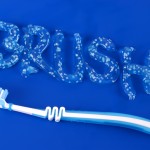
Regular toothbrushing is important for the maintenance of oral health and the prevention of caries and periodontal disease. Brushing effectively twice a day with a fluoridated toothpaste has been a key recommendation from dental organisations for many years. While in 2003 a Cochrane review (Marinho et al) noted that the effectiveness of fluoridated toothpaste was increased by greater frequency of use.
The aim of this review was to assess the effect of toothbrushing frequency on the incidence and increment of carious lesions.
Methods
Searches were conducted in the Medline, Embase, CINHAL, and Cochrane databases. Case-control, prospective cohort, retrospective cohort, and experimental trials that evaluated the effect of toothbrushing frequency on the incidence or increment of new carious lesions were considered for inclusion.
Two reviewers independently selected studies, extracted data and assessed study quality. The quality assessment tool for quantitative studies developed by the Effective Public Health Practice Project (EPHPP) was used. Meta-analysis of caries outcomes and meta-regressions to assess the influence of sample size, follow-up period, diagnosis level for carious lesions, and methodological quality of the articles were conducted.
Results
- 33 studies were eligible for inclusion with 25 contributing to the quantitative analysis.
- Of the 33 studies the quality of 13 was considered to be strong, 14 moderate and 6 weak.
- Compared with frequent brushers, self-reported infrequent brushers demonstrated a higher incidence of carious lesions, OR=1.50 (95%CI: 1.34 -1.69).
- The odds of having carious lesions differed little when subgroup analysis was conducted to compare the incidence between
- ≥2 times/d vs <2 times/d, OR= 1.45 (95%CI; 1.21 – 1.74). and
- ≥1 time/d vs <1 time/d brushers =OR 1.56; (95%CI; 1.37 – 1.78).
- Brushing <2 times /day significantly caused an increment of carious lesions compared with ≥2/day brushing, standardized mean difference [SMD] =0.34; (95%CI; 0.18 – 0.49).
- Overall, infrequent brushing was associated with an increment of carious lesions, SMD= 0.28; (95%CI; 0.13 – 0.44).
- Meta-analysis conducted with the type of dentition as subgroups, found the effect of infrequent brushing on incidence and increment of carious lesions was higher in deciduous, OR=1.75; (95%CI; 1.49 – 2.06) than permanent dentition OR=1.39; (95% CI: 1.29 -1.49).
- Meta-regression indicated that none of the included variables influenced the effect estimate.
Conclusions
The authors concluded
Individuals who state that they brush their teeth infrequently are at greater risk for the incidence or increment of new carious lesions than those brushing more frequently. The effect is more pronounced in the deciduous than in the permanent dentition. A few studies indicate that this effect is independent of the presence of fluoride in toothpaste. It is also possible that other factors in those claiming a higher frequency of brushing, such as greater health awareness and motivation, higher socioeconomic status, and a healthier diet, are responsible for the observed effects.
Comments
A good range of databases were searched although the searches were restricted to those published in English and performed after 1980, which could possibly impact on the findings. A range of studies designs was included and they were assessed for quality using the EPHPP tool. Details of the overall quality assessment for each of the studies is presented in an appendix to the main study. As the authors highlight, the included studies are longitudinal observational studies and an important issue is the method by which the frequency of toothbrushing is reported. Typically in these studies it is self-reported and the measurements are coarse (e.g, less than once a day, once a day, twice a day, more than twice a day), rather than specific numbers of brushing episodes per day and the authors rightly call for a uniform protocol for reporting toothbrushing frequency in future studies.
As the included studies are observational in nature the quality of the evidence is not high but is does provide support the professional recommendation to brush twice a day. However, there are many potential factors associated with effective toothbrushing, design of brush and bristles, duration and frequency of brushing as well as type for toothpaste and brushing method. While much has been written on these aspects the quality of the evidence to support these factors are limited and more clarification is needed.
Links
Primary paper
Kumar S, Tadakamadla J, Johnson NW. Effect of Toothbrushing Frequency on Incidence and Increment of Dental Caries: A Systematic Review and Meta-Analysis. J Dent Res. 2016 Jun 22. pii: 0022034516655315. [Epub ahead of print] Review. PubMed PMID: 27334438.
Other references
Marinho VC, Higgins JP, Sheiham A, Logan S. Fluoride toothpastes for preventing dental caries in children and adolescents. Cochrane Database Syst Rev. 2003;(1):CD002278. Review. PubMed PMID: 12535435.
EPHPP – Effective Public Health Practice Project
Dental Elf – 27th May 2015
Dental Elf – 11th Aug 2014
Dental Elf – 8th Oct 2013
Teaching toothbrushing with fluoride toothpaste – are we doing it well?

Toothbrushing frequently reduces tooth decay https://t.co/MHQwkYWxQJ
Frequent Toothbrushing reduces tooth decay https://t.co/UT35xeZ6bC
Ah so brushing teeth helps to fight tooth decay?
Frequent tooth brushers had fewer new cavities https://t.co/UT35xfgHAc
More caries seen in those who toothbrush infrequently https://t.co/UT35xfgHAc
Less tooth decay in frequent tooth brushers https://t.co/UT35xfgHAc
Don’t miss- Toothbrushing frequently reduces tooth decay https://t.co/UT35xfgHAc
[…] Toothbrushing frequently reduces tooth decay […]